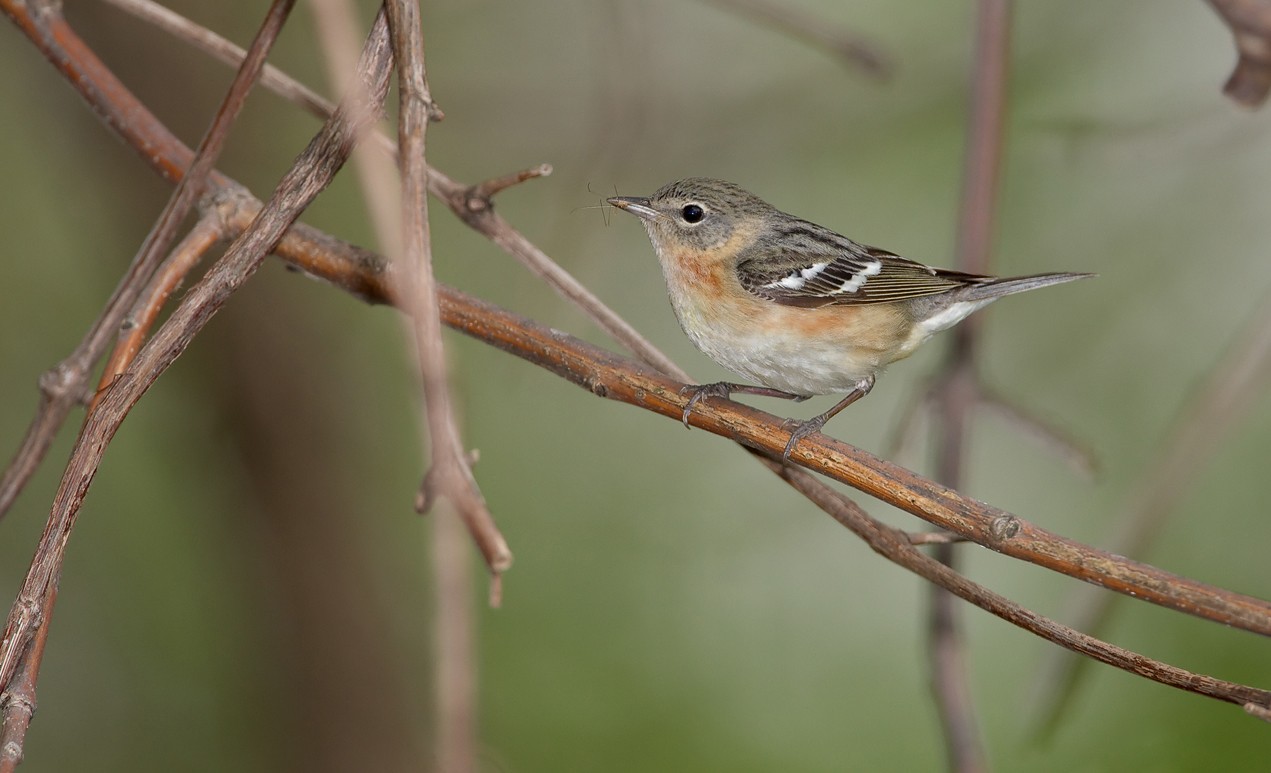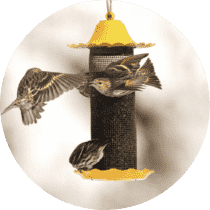Bay-breasted Warbler
A species of Setophaga Warblers Scientific name : Setophaga castanea Genus : Setophaga Warblers
Bay-breasted Warbler, A species of Setophaga Warblers
Botanical name: Setophaga castanea
Genus: Setophaga Warblers
Content
Description People often ask General Info
 Photo By William H. Majoros , used under CC-BY-SA-3.0 /Cropped and compressed from original
Photo By William H. Majoros , used under CC-BY-SA-3.0 /Cropped and compressed from original Description
The bay-breasted Warbler is known for its vibrant and contrasting plumage. Its chestnut-colored breast and yellow-green feathers make it a standout among warblers to birdwatchers. During the spring and summer months, it can be found in the boreal forests where it feeds on insects and sings its melodic trill songs. In the winter, it migrates to South America. 
Size
14 cm (5.5 in)
Colors
Brown
Black
Green
Red
Bronze
Gray
White
Life Expectancy
3 years
Nest Placement
Tree
Clutch Size
4 - 7 eggs
Feeding Habits
Bay-breasted Warbler primarily consume insects and spiders, favoring spruce budworm larvae, beetles, flies, midges, moths, butterflies, locusts, grasshoppers, and dragonflies. Feeding occurs methodically in middle tree levels, gleaning from vegetation. They incorporate more fruit into their diet during fall and winter, such as berries and tropical fruits, and may feed in mixed-species flocks in varied habitats.
Habitat
Bay-breasted Warbler primarily thrives in mature boreal coniferous forests, with a breeding preference for spruce and fir trees. It is highly adaptable, residing in mixed forests during prey booms and showing versatility by occupying a variety of forest types during migration. In winter, bay-breasted Warbler frequents wet lowland forests from Costa Rica to Venezuela, including altered landscapes like gardens.
Nest Behavior
The female bay-breasted Warbler, with some male assistance, builds the nest. They engage in nest building, egg-laying, and caring for the young during the breeding season. Both parents participate in nurturing the eggs and feeding the hatchlings.
Nest Characteristics
Bay-breasted Warbler typically nest in dense spruce or balsam fir, on a branch in the lower third of the tree. Their nests are crude cups constructed from bark, twigs, grass, lichen, spider silk, and plant down, lined with rootlets, hair, moss, pine needles, and grasses, measuring about 4.25 inches across and 2.25 inches tall.
Dite type
Insectivorous
People often ask
General Info
Feeding Habits
Bird food type
Bird Feeder Type

Small Tube Feeder

Platform
Sounds
Call
Recording location: Venezuela
Behavior
Bay-breasted Warbler exhibit notable territorial and mating behaviors, especially during breeding season. Early-arriving males assertively establish territories, using vocalizations and flight chases to deter rivals. While aggression toward conspecifics and other species like Blackburnian Warblers is common, detailed courtship rituals remain undocumented. Both sexes are invested in parenting, engaging in incubation and chick feeding. Post-fledging, bay-breasted Warbler display sociability, integrating into mixed-species flocks. This gregariousness persists through migration to wintering grounds, where bay-breasted Warbler may dominate other warblers over food resources. In winter habitats, their diet diversifies to include fruit and nectar, with a preference for foraging in the canopy.
Distribution Area
Bay-breasted Warblers breed in the boreal spruce-fir forests of eastern and central Canada, as well as the extreme northern United States. The species winters in the wet lowland forests of northeastern South America and southern Central America, and may be seen during spring and fall migration across the eastern half of the United States in a variety of vegetative communities. Many individuals cross the Gulf of Mexico on their long-distance migration, although some travel north and south along the Mexican shore. 
Species Status
Although currently classified by the IUCN as Least Concern, Bay-breasted Warblers, like many songbirds, are facing population declines across their range. A loss of insect prey and global climate change are contributing factors to decline. The global population is estimated to be fewer than 10 million individuals. 
Scientific Classification
Phylum
Chordates Class
Birds Order
Perching birds Family
New world warblers Genus
Setophaga Warblers Species
Bay-breasted Warbler